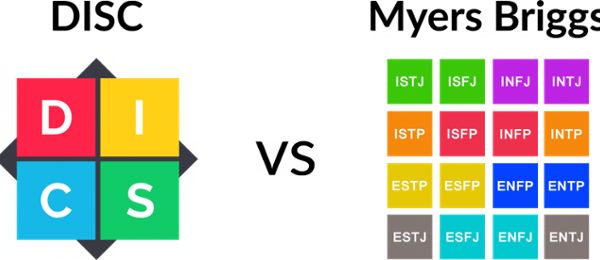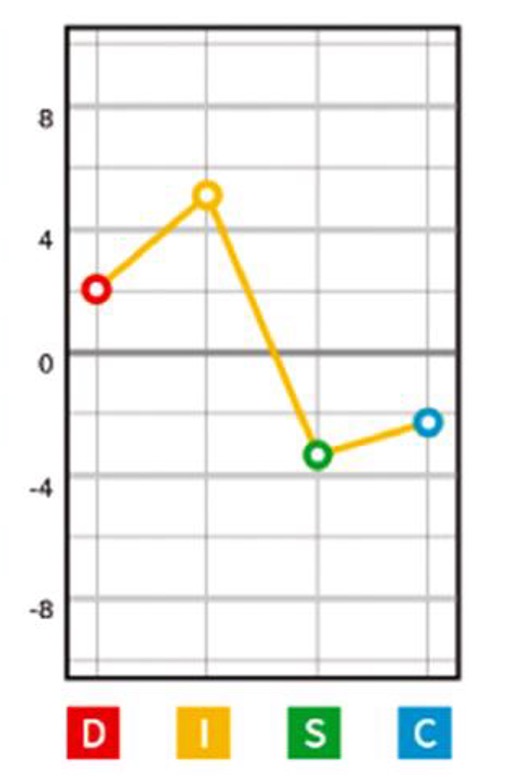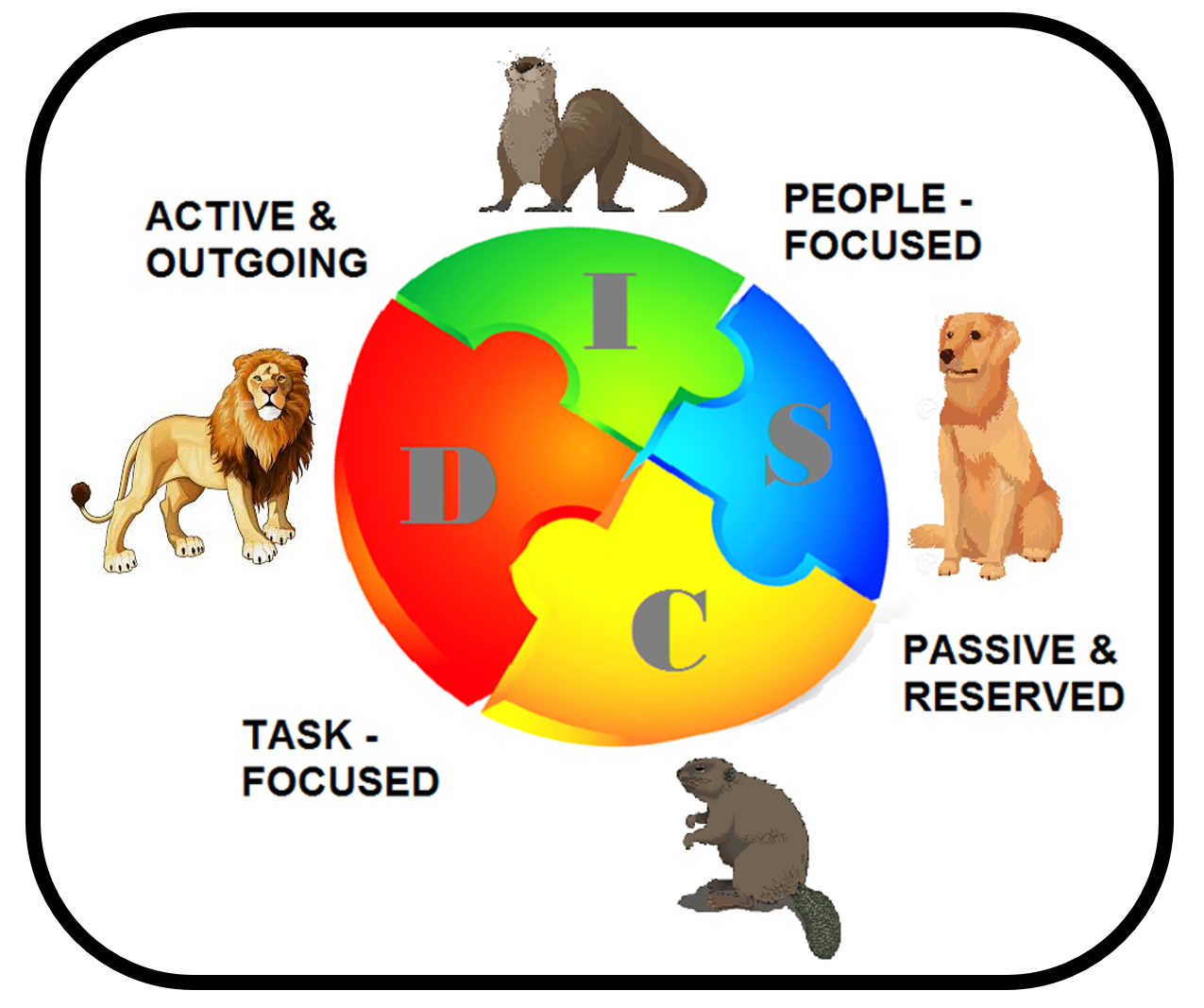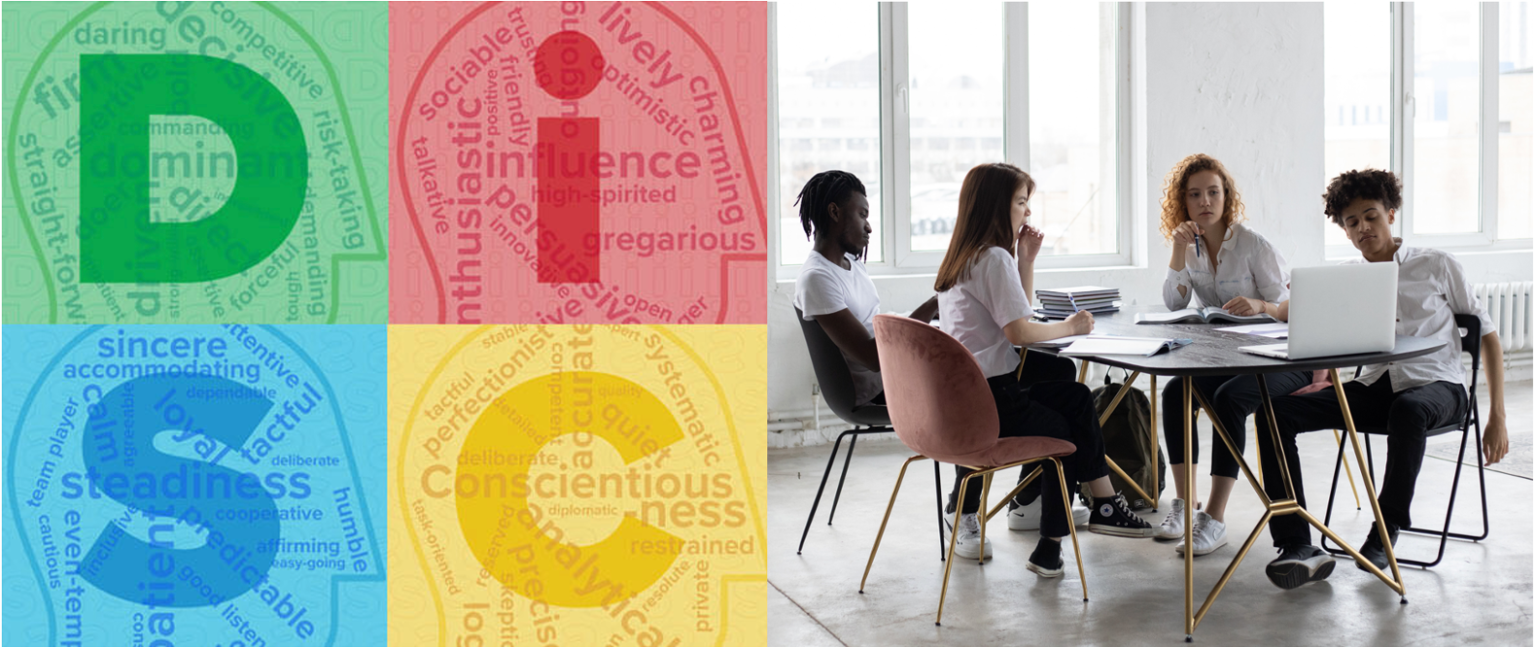The most effective leaders understand that clear communication isn’t a one-size-fits-all proposition. Different people have different communication styles, shaped by their personality tendencies.
Just like a key needs the right grooves to unlock a door, your leadership approach needs to adapt to different personalities to achieve truly productive communication.
Enter the DISC assessment…
This powerful tool helps leaders decipher the communication styles of their teams and clients, paving the way for a more collaborative and successful work environment.
DISC is one of the most researched and studied behavioral assessments available. After evaluating almost 50 years’ worth of data and over 10 million individual assessments, you can trust that DISC profiles deliver superior validity and reliability.
A Short Guide to the Four DISC Personality Profiles:
The DISC assessment is a powerful tool for understanding behavioral styles.
By recognizing these styles, leaders can improve communication and collaboration within their teams and across divisions in their organizations.
1 – The Dominant (D) Style: Results-Oriented Leaders
- Goals: Dominants thrive on achievement and leading the charge. They prioritize measurable results and efficiency. Their motto could be “get things done” – quickly and decisively.
- Strengths: Dominants are decisive, independent, and action-oriented. They excel at problem-solving and taking charge in challenging situations. Their leadership skills inspire others to achieve goals.
- Weaknesses: Dominants can be impatient, stubborn, and insensitive to others’ feelings. Their control-oriented nature may lead to micromanagement or a resistance to new ideas.
2 – The Interacting (I) Style: Enthusiastic Communicators
- Goals: Interaction thrives on social connection and recognition. They seek approval and enjoy being the center of attention. Their enthusiasm is contagious, and they excel at building relationships and influencing others.
- Strengths: Interacting styles are naturally charismatic and persuasive. Their communication skills and optimism motivate others and generate excitement for new ideas.
- Weaknesses: Interacting styles can be impulsive, easily bored, and crave constant stimulation. They may prioritize appearances over substance and lose focus on tasks when seeking approval.
3 – The Steady (S) Style: Reliable Team Players
- Goals: Steadys seek stability and harmonious relationships. They value cooperation, trust, and a predictable work environment. Their calm demeanor fosters a sense of security and belonging within teams.
- Strengths: Steadys are dependable, patient, and excellent listeners. Their focus on building relationships fosters loyalty and collaboration.
- Weaknesses: Steadys can be conflict-averse and resistant to change. They may struggle to assert themselves and express their needs, potentially leading to resentment.
4 – The Conscientious (C) Style: Detail-Oriented Analysts
- Goals: Cs prioritize accuracy and following established procedures. They excel at analyzing data, identifying problems, and ensuring tasks are completed meticulously.
- Strengths: Conscientious styles are detail-oriented, organized, and reliable. Their analytical skills ensure tasks are completed accurately and efficiently.
- Weaknesses: Cs can be overly cautious and critical. Their perfectionism may lead to procrastination and hinder progress. Additionally, their focus on logic may overshadow emotional intelligence.
.
By understanding these DISC team personality types, leaders can tailor their communication approach to better engage each team member. Recognizing strengths and weaknesses allows for a more balanced and productive work environment.
____________________________________________
One of the questions I get in working with clients to tailor a personality styles iassessment to their needs as part of a team building activities program is this:
“So, what is the difference between DISC and the MBTI?”
.

Here is a response from the ICF (International Coaching Federation), sharing why DISC is a better tool to improve team interactions and performance:
- People remember DISC long after they hear about it. Other models, such as MBTI, are more difficult to recall. It is hard to apply what you cannot remember.
- DISC is easy to apply and is less theoretical than Both are solid and widely used. It’s not a matter of which model is right, but which one best suits the intended use.
- DISC can easily be visualized and explained in a circular or quadrant diagram. MBTI may be helpful, but difficult to diagram in a simple manner. DISC can be illustrated in a way that even young children can understand. However, DISC is not so simplistic that it cannot yield in-depth insights.
- DISC is not just for self-understanding; it provides a framework to understand others and adjust how you relate to them… . However, to effectively apply the MBTI model for two people, you would then need to remember the right combination of eight letters for both individuals and then attempt to figure out the implications on your relationship.

And Now – The 5 Valuable Ways DISC Personality Profiles Unlock Clearer Team Communication and Collaboration
.
-
Know Your Team Better to Lead Better
Did you know that according to a study by Thinkific “89% of buyers are more likely to make a purchase when they feel understood by sellers”? The same principle applies to leaders and their teams.
The DISC assessment categorizes personalities into four distinct styles: Dominants (D), Influencers (I), Steadys (S), and Conscientious (C). Each style has specific communication preferences. Ds, for example, appreciate direct and concise instructions, while Is might thrive on brainstorming sessions and open-ended questions.
By understanding your team’s DISC styles, you can tailor your communication approach. You can give Ds the bottom line upfront, engage Is with the “why” behind a project, offer detailed instructions for Ss, and provide data and analysis for Cs. This personalized approach ensures your message resonates with each individual and fosters a more engaged team.
.
-
Adjust Communication to Prevent Misunderstandings
Imagine this: You deliver a clear and concise directive to your team, yet some members seem confused or hesitant. This often happens because communication styles clash. A 2023 blog by Tech Report found that “86% of employees cite the lack of effective collaboration and communication as the main causes for workplace failures.”

DISC can help bridge these gaps. By knowing your team’s styles, you can anticipate potential misunderstandings. For instance, you might explain the logic behind a decision for a C who prioritizes details, or rephrase instructions in a more action-oriented way for a D who dislikes small talk.
Imagine delivering a clear directive to your team, only to encounter confusion or hesitation from some members. This scenario often arises when communication styles clash. With DISC knowledge, you can identify potential pitfalls and address them before they escalate. For example, you might explain the rationale behind a decision for a Conscientious (C) team member who values details, or rephrase instructions in an action-oriented manner for a Dominant (D) personality who dislikes small talk. This proactive approach fosters clarity and cohesion within the team.
This proactive approach prevents confusion and ensures everyone is on the same page, leading to smoother project execution.
.
-
Leverage Team Strengths to Build Trust
Great teams leverage the unique strengths of each member. DISC helps you identify those strengths. For example, Ds excel at problem-solving and decision-making, while Is are natural connectors and motivators. Ss bring stability and accuracy, and Cs contribute thoroughness and analysis.
By understanding your team’s DISC styles, you can delegate tasks that align with each member’s strengths. A D might spearhead a brainstorming session to identify solutions, while an S ensures the chosen solution is implemented flawlessly.
This not only optimizes performance but also builds trust. Team members feel valued and appreciated for their unique contributions, fostering a more positive and collaborative work environment.
.
-
Build Stronger Client Relationships to Grow Sales
The principles of DISC extend beyond your team. Understanding your client’s communication style can significantly improve client relationships. A report by VisionPoint found that “86% of buyers are willing to pay more for a great customer experience” and “93% of customers are more likely to remain loyal to companies with excellent support.”
By using DISC, you can tailor your communication with clients according to their preferences. For example, with a D client, focus on the bottom line and the value proposition. For an I client, highlight the innovative aspects of your product or service.
This personalized approach creates a stronger connection, builds trust, and ultimately leads to higher client satisfaction.
.
-
Sustain a Culture of Appreciation to Boost Retention
DISC isn’t just about communication; it’s about understanding and appreciating different work styles. When you recognize and value these differences, you create a more inclusive and respectful work environment.
Consider a team meeting where a Steady (S) expresses concerns about the feasibility of a plan, while a Dominant (D) pushes for a faster timeline. With DISC knowledge, you can acknowledge the Steady’s attention to detail and the Dominant’s focus on efficiency, facilitating a constructive dialogue that addresses both perspectives. This approach not only resolves conflicts but also strengthens relationships and enhances teamwork.
This level of awareness and communication skill fosters mutual respect and allows the team to find a solution that works for everyone.
.
.
Want to Take the Next Step With YOUR Team?
The DISC assessment is a powerful tool that can unlock clearer communication, improve collaboration, and maximize the potential of your team.
To unlock the full potential of your team, consider investing in DISC assessment and training facilitation. Contact Sean Glaze, an experienced and interactive speaker and facilitator, to make your next professional development day a memorable and impactful success.
Schedule a DISC assessment workshop with a certified facilitator at Great Results Teambuilding today to improve team productivity and performance.
DISC training facilitation is not just about communication; it’s about transforming team dynamics, fostering collaboration, and driving success.
.
– – – – –
Sean Glaze is a leadership speaker, teambuilding facilitator, and author who delivers engaging experiences that ignite your team’s performance. Sean has worked with clients like Cisco, John Deere, the CDC, and Emory University to increase collaboration, boost productivity, and build more positive and profitable workplace cultures.
ignite your team’s performance. Sean has worked with clients like Cisco, John Deere, the CDC, and Emory University to increase collaboration, boost productivity, and build more positive and profitable workplace cultures.
As a successful basketball coach, Sean gained valuable insights on turning talent into teamwork – and now he travels around the country to share those lessons. Sean’s conference keynotes and custom team building events deliver laugh-out-loud moments and memorable take-aways that transform your people into winning teammates and more effective leaders.
Sean’s books, Rapid Teamwork, The 10 Commandments of Winning Teammates, and Staying Coachable are entertaining parables that help accelerate the growth of leaders and their teams!




